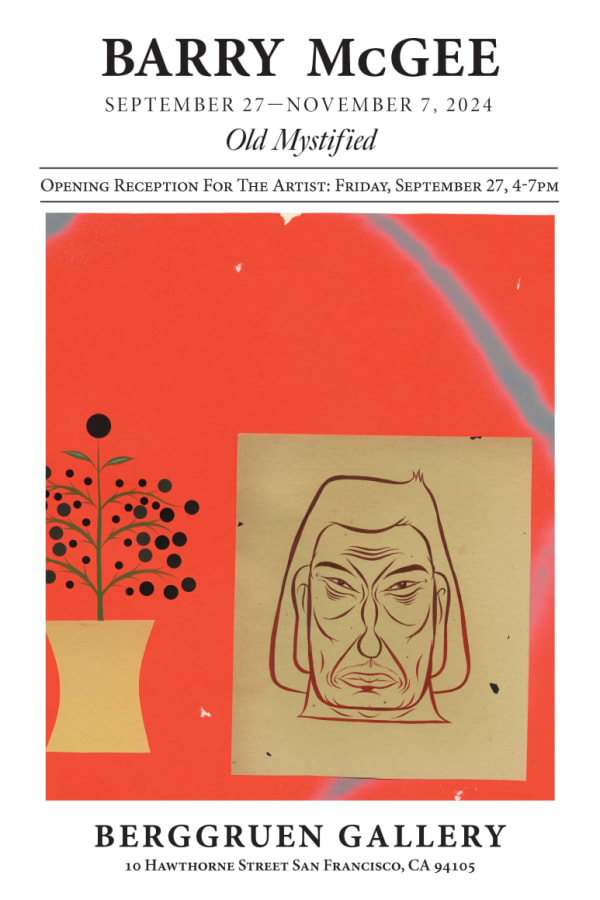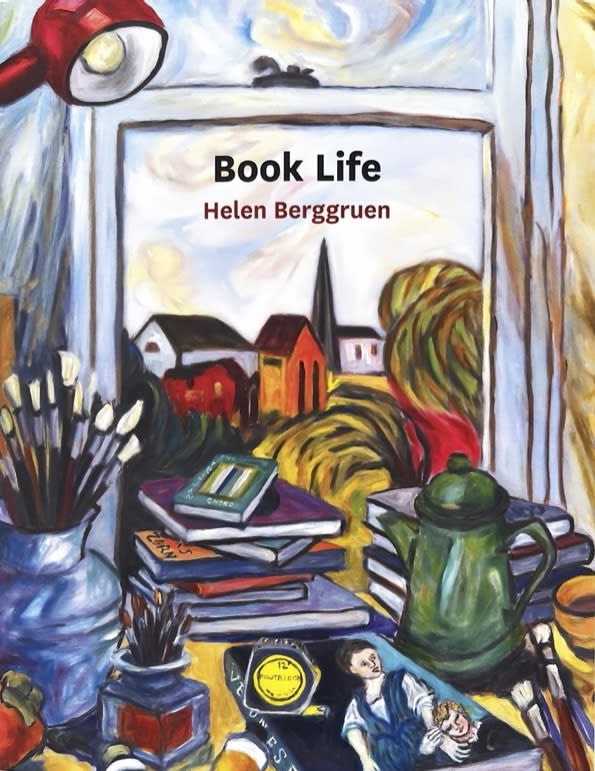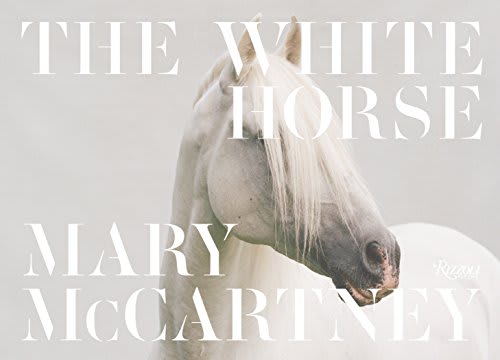-

Lucy Williams
Radiant City 2025 Hardcover, 263 pages
Publisher: Hurtwood
ISBN: 978-0-903696-85-2
Dimensions: 12 x 9.625 inches $73 Read more -

Helen Berggruen
Small Worlds 2025 Softcover $30 Read more -

Barry McGee: Old Mystified Poster
(4/4) 2024 $22 Read more
-

Barry McGee: Old Mystified Poster
(3/4) 2024 Read more -

Barry McGee: Old Mystified Poster
(2/4) 2024 $22 Read more -

Barry McGee: Old Mystified Poster
(1/4) 2024 Read more
-

Drawing with Scissors: Contemporary Works in Conversation with Matisse's Jazz
Exhibition Poster 2022 Publisher: Berggruen Gallery, San Francisco $35 Read more -

Helen Berggruen
Book Life 2022 Softcover $25 Read more -

Tom McKinley
September 1 – October 29, 2022 2022 Softcover
Publisher: Berggruen Gallery, San Francisco $15 Read more
-

Tom Otterness
September 1 — October 29, 2022 2022 Softcover
Publisher: Berggruen Gallery, San Francisco $15 Read more -

Richard Diebenkorn
Paintings and Works on Paper, 1948 – 1992 2021 Softcover, 72 pages
Publisher: Berggruen Gallery, San Francisco
Dimensions: 11 x 9 1/4 inches $45 Read more -

Berggruen Gallery: 50 Years
1970 – 2020 2020 Hardcover, clothbound and slipcased, 465 pages
Publisher: Berggruen Gallery, San Francisco
ISBN: 978-0-578-60871-6
Dimensions: 9 1/2 x 12 1/4 x 2 inches $125 Read more
-

Wayne Thiebaud
October 16 – November 28, 2020 Alexandra Wolfe, 2020 Softcover, 105 pages
Publisher: Berggruen Gallery, San Francisco
Dimensions: 11 x 9 1/4 inches $50 Read more -

Helen Frankenthaler
Paintings Alexander Nemerov, 2019 Softcover, 71 pages
Publisher: Berggruen Gallery, San Francisco
Dimensions: 9 3/8 x 11 1/4 inches $45 Read more -

Mary McCartney
The White Horse Simon Abuod, 2017 Hardcover, 200 pages
Publisher: Rizzoli, New York
ISBN: 978-0-8478-5849-1
Dimensions: 8 1/2 x 11 3/4 inches $55 Read more
-

Christopher Brown
The Waters Sliding 2017 Hardcover, 63 pages
Publisher: Berggruen Gallery, San Francisco
Dimensions: 9 1/2 x 11 1/4 inches $55 Read more -

David Bates
Southern Coast 2017 Softcover, 61 pages
Publisher: Berggruen Gallery, San Francisco
Dimensions: 11 x 9 1/4 inches $40 Read more -

The Human Form
January 13 – March 4, 2017 Steven A. Nash, 2017 Paperback
Publisher: Berggruen Gallery, San Francisco $60 Read more
-

John Alexander
Recent Paintings and Drawings 2016 Softcover
Publisher: John Berggruen Gallery, San Francisco $20 Read more -

Bridget Riley
The Interactive Character of Color, 1970 – 2014 Michael Bracewell, 2016 Softcover
Publisher: Berggruen Gallery, San Francisco $45 Read more -

Figures and Landscapes
David Park, Richard Diebenkorn, Nathan Oliveira, Manuel Neri 2014 Softcover
Publisher: John Berggruen Gallery, San Francisco
Dimensions: 11 x 9 1/4 inches $40 Read more
-

Michael Gregory
Long Way Home 2014 Softcover
Publisher: John Berggruen Gallery, San Francisco $20 Read more -

Wayne Thiebaud
Paintings and Works on Paper 2012 Softcover, 95 pages
Publisher: John Berggruen Gallery, San Francisco
Dimensions: 11 x 9 1/2 inches $40 Read more -

Nathan Oliviera
A Memorial Exhibition Steven A. Nash & Paul Berg, 2011 Softcover
Publisher: John Berggruen Gallery, San Francisco
Dimensions: 11 x 9 1/4 inches Read more
-

Helen Frankenthaler
Paintings 1961 – 1973 2010 Casebound book with jacket, 74 pages
Publisher: John Berggruen Gallery, San Francisco
Dimensions: 11 7/8 x 9 1/2 inches $50 Read more -

Christopher Brown
A Gardener's Notebook Jesse Hamlin, 2010 Softcover, 50 pages
Publisher: John Berggruen Gallery, San Francisco
Dimensions: 10 x 10 inches $20 Read more -

Abstract and Figurative
Highlights of Bay Area Painting Steven A. Nash, 2009 Softcover
Publisher: Berggruen Gallery, San Francisco $30 Read more
-

David Bates
The Tropics Barnaby Conrad III, 2008 Softcover, 55 pages
Publisher: John Berggruen Gallery, San Francisco
Dimensions: 10 x 10 inches $20 Read more -

Al Held
Watercolors Eleanor Heartney, 2008 Softcover, 57 pages
Publisher: John Berggruen Gallery, San Francisco
Dimensions: 10 x 10 inches $25 Read more -

Picasso
The Berggruen Album John Richardson, Marilyn McCully, and Olivier Berggruen, 2004 Hardcover, 88 pages
Publisher: John Berggruen Gallery, San Francisco; Mitchell-Innes & Nash, New York
ISBN: 0-9749607-0-5
Dimensions: 9 1/2 x 13 inches $50 Read more
-

Richard Diebenkorn
Figurative Works on Paper John McEnroe, Jane Livingston, & Barnaby Conrad III, 2003 Softcover, 113 pages
Publisher: John Berggruen Gallery, San Francisco
Dimensions: 11 1/4 x 9 1/4 inches $40 Read more -

Ed Ruscha
Powders, Pressures and Other Drawings 2000 Softcover, 72 pages
Publisher: John Berggruen Gallery, San Francisco
Dimensions: 9 x 12 inches $30 Read more -

Philip Guston
Works on Paper, 1968 – 1980 Bill Berkson, 1998 Softcover, 32 pages
Publisher: John Berggruen Gallery, San Francisco
Dimensions: 8 1/2 x 8 1/2 inches $20 Read more
-

Nathan Oliveira
Recent Paintings and Works on Paper Michael McClure, 1997 Softcover, 40 pages
Publisher: John Berggruen Gallery, San Francisco
Dimensions: 11 x 8 1/2 inches $20 Read more -

American Modernism
Paintings and Drawings from the Collection of William and Glenn Janss Barbara Haskell, 1996 Softcover, 36 pages
Publisher: Berggruen Gallery, San Francisco
Dimensions: 10 x 8 inches $20 Read more -

David Bates: Roughshod
Sculpture and Works on Paper 1994 Softcover, 36 pages
Publisher: John Berggruen Gallery, San Francisco
Dimensions: 11 x 8 1/2 inches $20 Read more




































